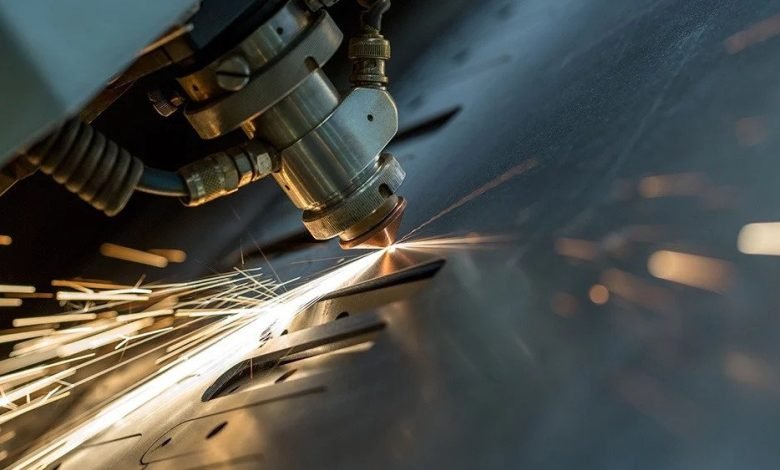
There are several different types of metal fabrication processes, including cutting, casting, forging, punching, and welding. Each of these processes has its own advantages and disadvantages. Read this about metal fabrication, read the following article. It will give you an overview of the various types of metal fabrication processes and how each one works. Once you have an understanding of the different types, you’ll be able to choose the one that’s best for your needs.
Cutting
The types of metal fabrication processes vary. Some processes are specific to sheet metals, while others are applicable to both sheet metal and other materials. For example, shearing is an alternative form of cutting. This process is often used to trim the edge of a metal sheet. Shearing is similar to the way paper is cut in copy shops, with the sheet being fed horizontally through a metal cutting machine. Afterward, it is commonly used to form a rounded edge or other angular shape.
Cutting is the primary process of metal fabrication, while polishing, coating, deburring, and painting are secondary processes. Metal fabrication can be complicated, and you should consider your project’s specifications before entrusting your project to a shop. For example, a metal fabrication shop may specialize in just cutting, while another may focus on other processes like finishing. In addition to cutting, metal fabrication shops may also offer other services such as welding and drilling.
Must Read : Unique Product Packaging Such As Customizable Mailer Boxes
Casting
Casting is a form of metal fabrication in which molten metal is poured into a mould and allowed to solidify. The result is a product that resembles the original model. This type of metal fabrication is best suited for large, complex parts. The solidified workpiece is then removed from the mold and can undergo finishing treatments to complete the finished product. There are many types of casting methods, and each one produces different results.
Plaster casting is a popular form of metal fabrication. This method produces fine details and finishes and is a popular option among manufacturers. Plaster molds are disposable and only shape non-ferrous metals. It’s commonly used for lock components and gears. Plaster casting is an affordable way to create small quantities and prototypes. It’s an excellent option for long runs, however. The benefits of this method are not incalculable.
Before starting the casting process, a pattern must be designed. The pattern can be a single-piece solid pattern, or a split pattern with an upper and lower section called the drag. In both solid patterns, cores are inserted to create hollow areas inside the mold. The parting line between the drag and cope is called the parting line. The process is similar to casting, but the differences between the two processes are more apparent in the final product.
Forging
Forging is a metal fabrication process in which a preformed metal is forced between two dies to take the general shape of the end product. For simple items, one press may be enough to create the desired shape. For more complex items, multiple presses may be required at different pressure levels and with different dies. But for most applications, this process is highly cost-effective and results in components that are consistent in shape.
Forging is an ancient metalworking process, and the practice has been used by smiths for thousands of years. In the Bronze Age, bronze and copper were the primary materials for forging, but iron quickly replaced them. Today, forged products range from kitchenware to hand tools to edged weapons. The process has evolved over the millennia and is now an industry in its own right.
Another type of metal fabrication process is forging. It is a process used to create shapes in sheet metal. It is the best option for high-quality pieces. Some examples of forged metal include blender bases and appliance shells. It also produces the pressing surfaces of clothing irons. Similarly, forging can produce wires, connectors, prongs, and other parts. There are many other uses for forging, and it’s important to understand the process before choosing a metal fabrication method.
Punching
Punching is a process used to create various components and parts for a wide range of goods. Various industries rely on fabricated metal components. Punching can be done with a variety of sheet metal materials, each of which has its own unique properties and limitations. Punching also affects the quality of the finished product due to repeated stresses and heat build-up. Sharp tooling is important to minimize this distortion.
The most common material to be punched is iron, but copper and plastics are also commonly used. Although iron is the hardest metal to punch, copper and stainless steel are less resistant and can be punched. Metal sheet is the most common material to be punched, but rolled materials can also be punched. It is a versatile process used for a wide range of applications. It is also a popular choice for metal parts and components.
Another popular metal fabrication method is drilling. During drilling, a rotary cutting tool presses against a piece of metal and rotates quickly to produce a hole. Another process is drawing. Drawing involves stretching or bending the metal to create a thin layer. Punching and drilling are common, but they do have differences. While some are simpler, others require multiple processes. In some cases, one process can produce several distinct products.
Drawing
Drawing is a process used in metal fabrication. It involves pulling a rod through a die and stretching it to reduce the cross section of the material. However, the force required to pull the wire through the die is limited by the yield strength of the steel. A larger reduction will require a higher pulling force. Consequently, it is important to determine the amount of force that is necessary to reduce the diameter. The yield strength of steel limits the maximum diameter reduction possible.
In general, drawing and metal extrusion share many manufacturing factors. Both processes can achieve incredible reductions in cross sectional area. While extrusion is more versatile, drawing has some limitations. In addition, the amount of force required to form the work must be controlled, whereas metal extrusion offers incredible reductions in cross sectional area. As such, drawing is generally used when a more complex part is required.
Milling
The various types of fabrication processes involve manipulating metal in a particular way, and Milling is one of them. Bending, for example, involves forcing metal to bend into a specific shape. Similarly, forming, or forging, involves a manufacturer shaping and forging the metal. Milling is a type of metal fabrication process that involves a variety of tools and techniques that can be used to reshape metal.
CNC machines are commonly used for milling. This process removes excess material from the metal workpiece. The tool can be manually operated or a CNC milling machine. Milling is usually the last step of a metal fabrication process. There are several variations of milling, including face milling, climb milling, form milling, and angular-cutting. Once the desired shape has been achieved, CNC machines can then finish the workpiece.
Another type of metal fabrication is deep drawing. This process uses a tool to apply pressure to molten metal and then let it cool and harden. This type of metal fabrication is common in mass-production because it allows manufacturers to use the same mold repeatedly. It also creates box-shaped products and cylindrical vessels. Further, milling also allows for the manufacture of wrought steel and titanium, which are often used in jewelry.
Drilling & Turning
The following article explores the various types of metal fabrication processes. Drilling and turning involve a variety of metal-working processes, such as bending and cutting. Among these processes, folding involves manipulating the metal to bend it at an angle. The process is typically facilitated by a stationary hollow die, which has a pointed tool on top. Forging is one of the oldest metal fabrication methods, and it involves exerting force on hot metal to form the desired shape.
Cutting and drilling are two primary types of metal fabrication processes. Cutting involves dividing a large piece of metal into smaller ones. The end shape of the cut metal is typically similar to that desired for the final product. Most metal cutting machines use saw/blade, laser/plasma, water jet, and wire EDM. Grinding and polishing remove the access material and polish the metal’s surface to achieve the desired finish.
Also Read : What You Can Learn From Experts About The Shelf Talkers Industry
Extrusion
Extrusion is one of the types of metallic fabrication processes. This process uses a die to press a cylindrical billet through a smaller cross section. The resulting extrudate is then pushed out of the die, which is a mechanical or hydraulic press.
The most common type of extrusion is direct, in which a billet is pushed through a press cavity with a ram. This method is the most basic and is a mechanical process. There are also several varieties of indirect extrusion. Hydrostatic extrusion, for example, uses a hydraulic fluid to press a billet. Ladder extrusion, on the other hand, uses a die positioned on the side of the billet. Impact extrusion uses a punch to form the extrudate, mostly used on softer metals, for overview.




